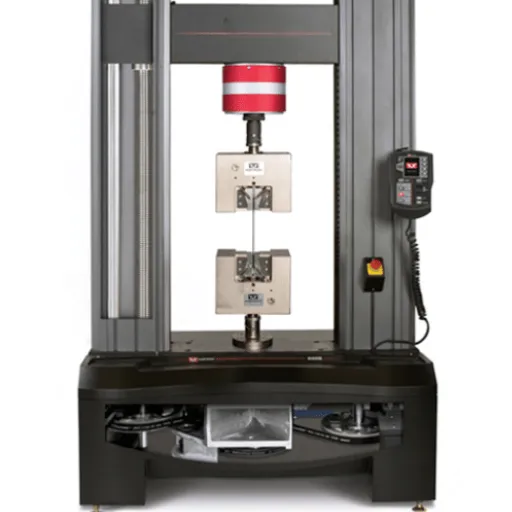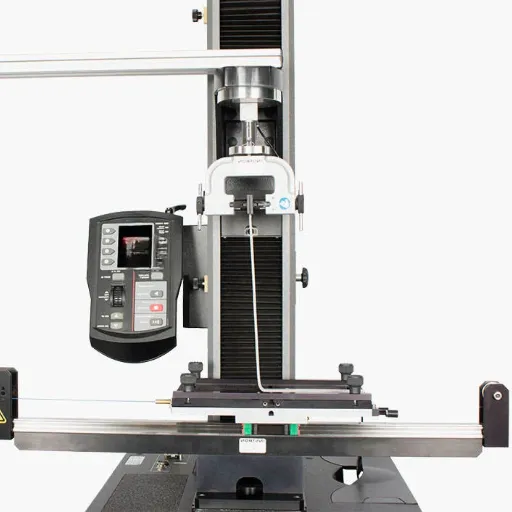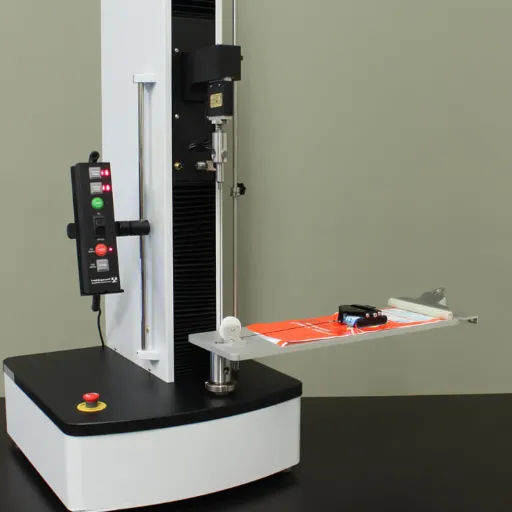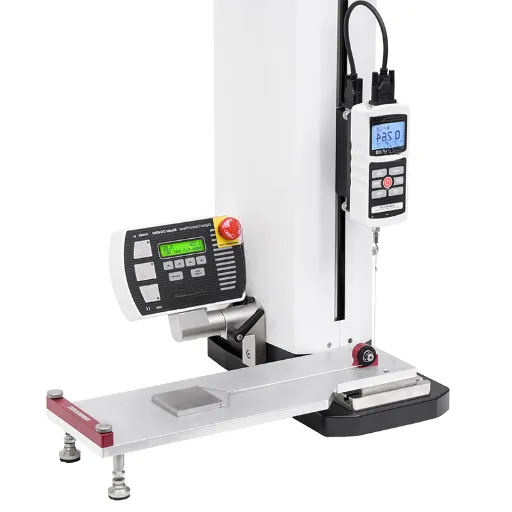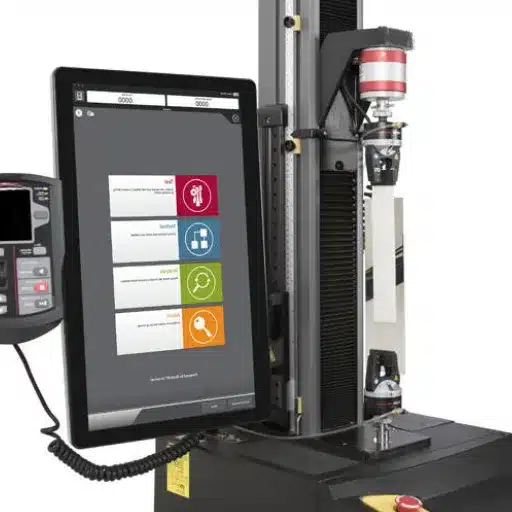Steel strands constitute one family of elements with strength and durability by which engineering and structural applications are set. To validate their performance and reliability under stress, these strands must undergo some very precise advanced testing methods. Hence the crucial role of the tensile testing machine. The tensile testing machine is used to ascertain the tensile strength of steel strands, the capacity of steel strands to extend, and this machine can be used to observe the behavior of steel strands under actual tensile stress loads.In this article, let us consider the basics of steel strand tensile testing, along with how the machines work, why they’re important, and the key parameters that they’re set out to quantify. If you are in the industry, a researcher, or merely curious about the processes used in testing materials, then the facts concerning tensile testing presented here will shed considerable light on why it is essential for safety and efficiency in the modern path of construction and engineering. Join us as we unlock the mechanisms and significance of this indispensable tooling!
Overview of Tensile Testing Machines
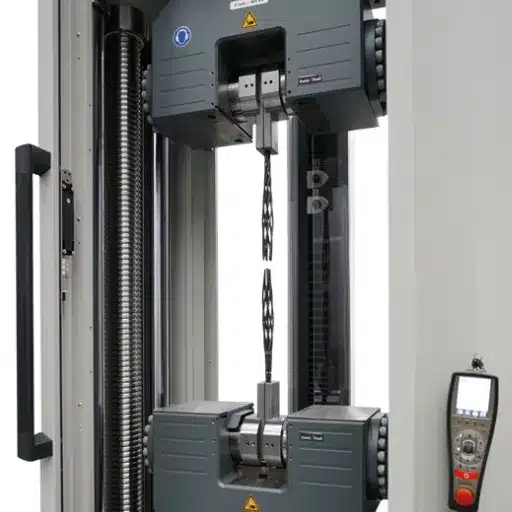
What is a Tensile Testing Machine?
In a tensile testing apparatus, we measure the strength and mechanical properties of a specimen under tensile stresses. It can pull specimens until failure and give information about tensile strength, elongation, and yield strength, among others. This machine is basically important in assuring that the materials meet the requirements and specifications in industrial and engineering applications.
Steel strand tensile testing machines, in a sense, are a different species of tensile testers to check the performance of steel strands that are often used in the construction of bridges, buildings, and prestressed concrete. They apply controlled tension force to steel strands until breaking, thereby measuring parameters such as maximum load capacity, ductility, and elastic limits. Essentially, these tests ascertain and limit the maximum stresses that the steel strands may be subjected to in the working environment.
A testing process assures safety and quality, ensuring that steel strands used in critical infrastructure applications meet industry specification and certification tests. By interpretation of the results generated by tensile testing machines, engineers, and manufacturers can accomplish identifying weak points in materials, improving their design, or even adhering to performance specifications required for the materials. Hence, these tensile testing machines stay imperative to maintaining building reliability and durability.
Importance of Tensile Testing in Material Science
The steel strand tensile test equipments are vital for determining the mechanical properties of steel strands, which have widespread applications in construction and industrial works. The tensile testing machines set together the tensile strength, elongation, and breaking points of the material, giving assurance that steel strands qualify and satisfy the safety and performing standards laid down. Such testing is required of materials used in bridges, buildings, and other civil engineering projects where reliability is a big concern.
Importance of testing steel strands is realized in that practically they find critical applications in load-bearing structures. By testing their tensile properties, manufacturers ensure that steel strands resist high levels of stress without any failure. This would also bar the likelihood of a precocious breakdown of civil structures, thereby promising longevity and safety of the structures that they are incorporated in.
Besides, steel strand tensile testing ensures that a testing material complies with the specifications and standards of the industry. Materials that pass the stringent tests become a matter of confidence among engineers and project managers to use across demanding projects. With the help of tensile testing machines, vital data are generated that aid researchers in improving the quality, strength, and reliability of steel-based materials.
Key Components of a Tensile Testing Machine
A tensile tester in steel strand testing consists of a strong frame, a load cell, and gripping units. The whereabouts of the frame stand as the structural support and lend stability to the testing setup. It has to be sturdy enough to bear the relevant load capacities that are borne by steel strand testing to prevent any deformation or inaccuracy during the test.
The load cell measures the force applied during the test. It converts the mechanical force into an electrical signal, so that one can keep track of the load being applied on the steel strand. The load cell must be accurate and sensitive to give us the right plot of tensile strength and his behavior under stress.
Gripping mechanisms hold the steel strands so they won’t slip while also distributing the force evenly along the test sample. Such high-quality grips must avoid early failure caused by the grips holding the sample unevenly or actually deforming the material underneath the grips due to uneven tension. Together, they make efficient, reliable tensile testing of steel strands possible.
Tensile Tests for Steel Strand
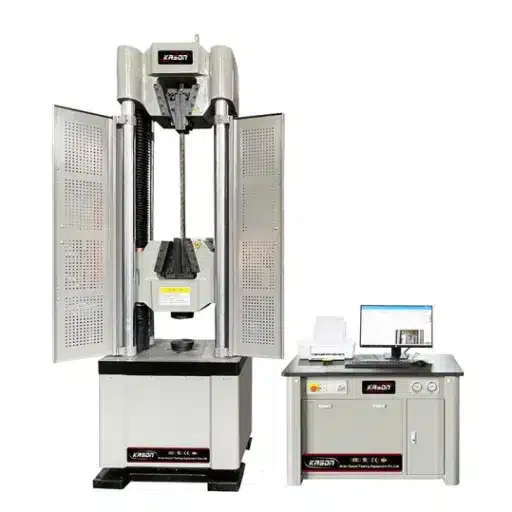
Understanding Steel Strand and Its Utilization
Steel strands, by virtue of strength and durability conferred upon them, find application in plenty of construction and infrastructure projects. They are primarily used in pre-stressed concrete applications, bridges, and cable-stayed structures because these structures require their strands to support very heavy loads and prevent elongation seriously. The evaluation of the mechanical properties of steel strands is one of the most basic requirements for safety and performance.
The tensile testing machine for steel strands is designed to test the strength, ductility, and elongation of steel strands. A steel strand sample is subjected to varying amounts of force by a tensile testing machine until it breaks and thus records important information about the tensile characteristics of the instrument. Testing thus helps engineers decide that the steel strand is fit for use for which it was intended, implying that it is expected to perform reliably under expected loads and conditions.
Such precisions must, however, render the testing machine with consistent and accurate results compliant with the relevant regulations and standards. Hence must such a machine have robust gripping in order to hold the sample effectively, smooth application of force, and high technology recording of data and the entire process for the assessment of steel strands to be successful, which will, in turn, ensure their rightful use in construction and infrastructure projects around the world.
Types of Steel Strands: PC Strand and Prestressed Steel
Steel strands are an integral part of construction, imparting strength and durability to concrete structures. Depending on the classification, two primary types of steel strands are considered: PC strands and prestressed steel. Each offers unique characteristics, thereby making them suitable for certain types of applications in structural and civil engineering.
PC Strand
PC Strand refers to Pre-Stressed Concrete strand, whereby individual wires are twisted together into a helical form. These strands are commonly used in either pre-tensioned or post-tensioned concrete applications. They work by allowing the concrete to withstand much higher tensile stresses than it could on its own. PC strands are generally high-strength materials used extensively in bridges, buildings, and large-scale infrastructure providing better stability and longevity.
Prestressed Steel
Prestressed Steel, however, represents steel elements whose stress is altered by preloading in order to counteract the forces of tension that will be injected into them during service. They also consist of steel strands that strengthen the concrete structures by reducing cracking, deflection, and eventual costs of maintenance. Given that the performance of these strands is highly dependent on the stringent quality standards being met, tensile testing machines become necessary to test for their strength, ductility, and conformance to the general requirements of the industry.
Common Standards for Steel Strand Testing: ASTM and ISO
Steel strand tensile testing is done according to recognized standards so that results can be compared with those of another laboratory and put to use by other parties. The commonly quoted standards are ASTM A1061 and ISO 15630-3. They specify the procedure by which the tensile strength of steel strands and elongation tests are carried out and show that the standards are stringent enough that the steel strands can withstand safety and performance requirements.
ASTM A1061
ASTM A1061 is the most practiced standard in North America. This standard deals with the tensile testing of prestressing strand and wire. It lays down the requirements for tensile strength, yield strength, and total elongation properties to be determined. It also lays stress on the calibration, accuracy, and repeatability of percentages in apparatus used.
ISO 15630-3
Another standard, ISO 15630-3, is recognized internationally and applies to steel products used in prestressed and reinforced concrete. It covers comprehensive guidelines in steel strand testing and emphasizes its tensile performance and mechanical properties. Adherence to such a standard ensures that laboratories and industries adhere to uniform practices across markets, thus making trade and compliance easier.
Technical Features of Tensile Testing Machines
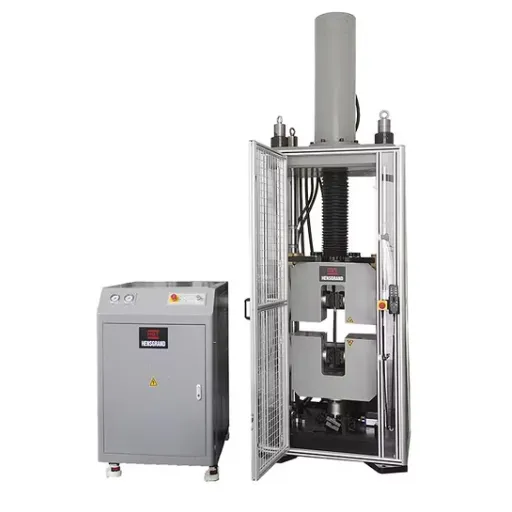
Computer Control in Tensile Testing Machines
Computer control in tensile testing machines ensures considerable improvement in accuracy levels and efficiency during the testing of steel strands. These allow for the recording of data, monitoring of parameters in real time, and analysis of tensile strength and mechanical properties, all with a touch of automation. The software teaches the machine to apply the force in a very consistent manner, thus simplifying procedures that can be very complicated and prone to operator error.
An important feature of these systems is the production of detailed, reliable test reports with tensile strength, elongation, and breakage points that are necessary for the assessment of steel strands in terms of quality and performance. Reports generated from automated data analysis also greatly reduce the data entry work of operators and increase test repeatability under international standard conditions such as those laid out under ISO 15630-3.
Other possible advantages include customization options. Laboratories can tailor these systems to accommodate the specific testing requirements associated with certain specimens, force ranges, or environmental conditions, boosting the overall versatility of the testing equipment. This level of versatility, combined with the precision and efficiency of these computer-controlled tensile testing machines, assures the quality and trustworthiness of steel strands used in prestressed and reinforced concrete applications.
Key Specifications: Load Capacity and Measurement Accuracy
In evaluating steel strand tensile testing machines, the load capacity must be viewed as a primary specification. Generally, such machines are designed to withstand large forces, stretching from a few kn to a few thousands of kn. Specific load capacities depend on the diameters and material properties of the steel strands being tested. For precise testing, the machines should be able to apply these loads exactly and consistently over the specified range, considering the different requirements of prestressed and reinforced concrete strands.
Measurement accuracy is another factor that must be highly considered in tensile testing. Having the correct sensors with proper calibration ensures that measurements such as force, elongation, and strain are as accurate as possible-withing a tolerance of ±0.5% or better. Measurement accuracy should always be as high as possible in determining tensile strength and elongation percentages, both of which are principal indicators of a steel strand’s quality and suitability in construction. To accomplish such accuracy, testing machines feature state-of-the-art sensors and on-line analysis instrumentation.
Some instruments even feature automatic calibration systems and digital controllers to guard against loss of accuracy during lengthy periods of use. Such techniques reduce errors of test personnel and assure reproducibility in repetitive tests. These mechanisms coupled with the capacity to apply large loads through the test specimen ensure that the tensile testing machine is one of the most important pieces of equipment guaranteeing testing institutions certify steel strands against well-defined safety and performance criteria of the industry.
Stress Relaxation Testing Machines: A Specialized Approach
The stress relaxation testing machinery is essential in determining whether steel strands will remain serviceable under sustained loads over a period of time. The machine measures the drop in stress in a material maintained at constant strain as time passes. It is therefore important to conduct these tests on steel strands whenever they undergo constant stress, like in bridge cables, pre-stressed concrete structures, and a range of other bearing systems.
Stress relaxation aims to create conditions under which materials confront potential service situations over time. The machine strains the steel strand by a certain predetermined amount and observes the decrease in stress for the prescribed time interval. Data acquired reliably from this process will enable both manufacturers and engineers in understanding the behavior of the material so as to comply with specifications and that the strands are capable of enduring long-term usage in service without compromising the integrity of the structure.
The machines are calibrated with utmost precision to give that degree of accuracy even for testing an extended period. These have provisions in place to maintain constant strain throughout when influences such as temperature and vibrations may affect the results. By coming up with repeatable, consistent data, the stress relaxation testing machines will assure that steel strands meet strict safety requirements consistently and hence improve the reliability of critical infrastructure.
Choosing the Right Tensile Testing Machine
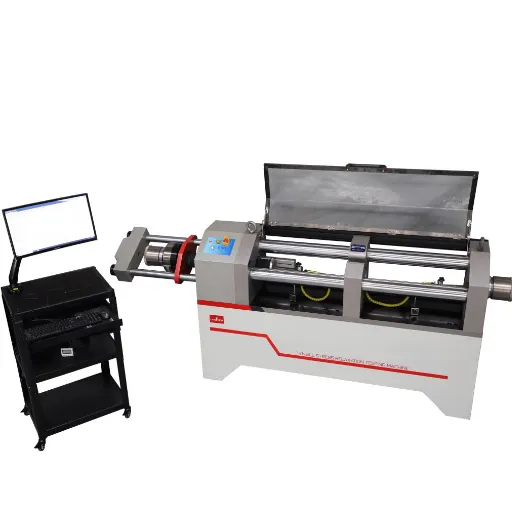
Factors to Consider for Steel Strand Testing
Accuracy matters the most in choosing a tensile testing machine for steel strand testing. It forces and measures tensile force consistently, recording the strength and deformation of the material. In other words, the instruments must be based on industry standards and be able to test a steel strand concerning its diameter, length, and mechanical properties. If these are not taken into consideration, only imaginary results will obtain which have no real-world application.
Each other key consideration is the load capacity and range of the machine. Steel strands are designed for use in beneficial applications where tensile strength or ultimate load is needed, such as construction and infrastructure. The tested masses should readily serve heavy loads while maintaining structural integrity and precision. The further spectra may include test activities, such as tension, strain, and stress relaxation analysis, that fulfill the evaluation requirements of a myriad of situations.
Another chief consideration will be the ease of operation and data analyses presentation. These should be automated and intuitive, thus speeding up tests while minimizing human errors. They should produce the most detailed and accurate results in formats that are easy for their analyses and reports to be compiled. To have the machine in service during its lifetime wild high effects of testing that may be placed on it, also consider a more powerful package of machine maintenance. These considerations finally help in finding the best tensile testing machine for a steel strand.
Comparing Machines: ASTM A416 vs. ISO 15630-3 Compliance
In tensile testing of steel strand under ASTM A416 and ISO 15630-3, it is imperative to comprehend the principal distinctions inherent to both compliance frameworks. That is to say, ASTM A416 emphasizes mainly testing requirements for uncoated wire and strand for prestressed concrete, with regard to tensile strength, elongation, and other performance parameters considered crucial in construction applications. On the contrary, ISO 15630-3 provides more generic guidelines for the testing of steel used for concrete reinforcement and prestressing, covering a wide array of properties, including mechanical tests, chemical composition, and ductility.
| Aspect | ASTM A416 | ISO 15630-3 |
|---|---|---|
| Focus | Prestressing strand and wire for concrete | Steel products for prestressed and reinforced concrete |
| Scope | Tensile strength, yield strength, elongation | Comprehensive testing including ductility |
| Application | North American construction standards | International testing methods |
| Machine Requirements | Durability and accuracy focus | Versatility and multi-purpose capability |
In selecting the right tensile testing machine, the specific application and testing scope should be considered. If the machine should focus mainly on steel strands used in prestressed concrete, ASTM A416 may be more relevant for your needs. For broader testing requirements or multi-purpose use, ISO 15630-3-compliant machine standards, therefore, provide more flexibility and greater compatibility. A comparison of the two standards will ensure the best possible selection is made to meet operational and compliance needs.
Cost vs. Performance: Making an Informed Decision
In the choice of tensile testing machine for steel strands, a tradeoff arises between cost and performance. While less expensive machines have the superficial appeal to the uninformed buyer, such units usually fall short of required precision, expected life, or possess the features needed by the tester, thus shedding much on the quality and efficiency of the test. A good machine generally meets industry standards such as ASTM A416 or ISO 15630-3, producing results of known accuracy and repeatability.
Key Insight: It should determine in each operational circumstance whether the superlative costs are worth paying. For this, an analyst would do well to look into the long-term benefits which come with using machines that offer better performance.
High-quality machines always translate to being reliable and having longer life, so they rarely break down or get through multiple repairs in their life. The other thing about such machines is that they possess the advantages of fast but automated data acquisition and systematic analysis, which saves time and improves consistency. Although its purchase price is high, operational efficiency and reduced downtime contribute more to the overall cost advantage of such machines.
The application would finally determine what is right. For basic testing of fixed materials such as steel strands leading to prestressed concrete, a low-cost machine meeting the applicable standard might be adequate; however, with a wider assortment of tests and demanding tests, purchasing a machine offering wider functionality and international-standard-compliant ensure flexibility and long-term reliability. Weigh the need today with the added needs of tomorrow and that will redirect the selection towards the best machines for your operations.
Applications of Tensile Testing in the Industry
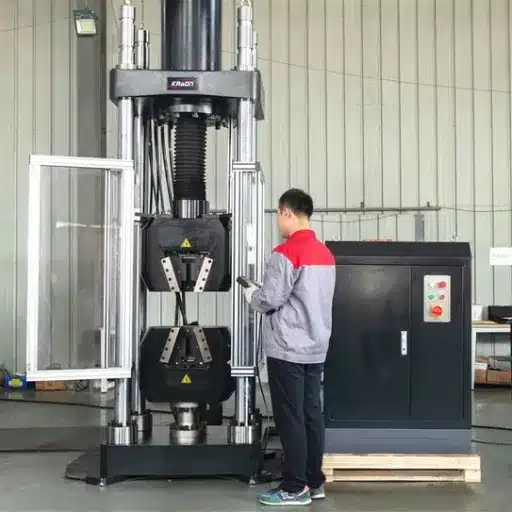
Role of Tensile Testing in Prestressed Concrete Construction
Tensile testing ensures the quality and reliability of steel strands used in prestressed concrete construction. Steel strands are put under great stress during service life, and their performance depends on their material properties: tensile strength, ductility, and elongation. Being tensile, a wire testing machine measures such properties by exerting a controlled force on the steel strand with respect to time until the maximum force is reached, i.e., the wire breaks, so as to find out the ultimate tensile strength(UTS) of the steel strands and also to ensure that steel strands can sustain intended loads.
Based on prestressing principles, steel strands are evaluated under severe tensile requirements to maintain the structural integrity and safety of prestressed concrete. Tensile testing equipment measures the maximum load, deformation capacity of the strands, modulus of elasticity of strands, etc., for the strand to comply with the appropriate standards, thereby strictly ensuring only quality steel strands are used for construction, thus decreasing the risk of failure of structures and also increasing the durability of concrete members.
Tensile testing is also an excellent way for a manufacturer and an engineer to gain valuable information for the improvement of quality and materials. By knowing how their material behaves under stress, they can make corrections or modifications in the manufacturing processes to improve performance and reduce costs. This testing, therefore, forms a vital link in the chain of production and guarantees with assurance that the mass production of prestressed concrete structures will be a success.
Case Studies: Successful Implementation of Testing Machines
1. Improving Prestressed Concrete Bridge Durability
One prominent example of the steel strand tensile testing machines is that they were used in the construction of prestressed concrete bridges. With these testing machines, engineers were equipped to carry out tests on tensile strength of steel strands to an exact degree what considerations were placed in the structures. Steel strands would pass through the various tests designed to measure tensile strength, and those meeting the strength criteria were all that got to be incorporated into the structures. This greatly enhanced the durability and life of the construction. Early detection of inferior strands would avoid costly repairs and would ensure the safe use of such infrastructures.
2. Material Wastage Minimization in Construction Works
There was another instance of successfully using steel strand tensile testing equipment in a large commercial construction project. Through strict adherence to tensile testing procedures, material wastage was kept to a minimum by accurately eliminating strands which did not meet the specifications. This approach cut costs and enhanced sustainability by maximizing material usage. Contractors felt that the testing procedure helped boost operational activities and, consequently, the quality of the final construction.
3. Improving Safety and Compliance Standards
Safety and compliance improved in leaps and bounds in a manufacturing plant producing materials for prestressed concrete structures after implementing tensile testing machines on steel strands. The machines enabled the plant to adhere to stringent industry regulations, as data were provided on the mechanical properties of their products. This confirmed that all steel strands used for various construction projects complied with regulatory standards, thus reducing the probability of failure in building structures. The incorporation of the testing technology also increased clients’ confidence, thereby rendering the plant more competitive.
Emerging Trends in Tensile Testing Technology
The tensile testing domain, especially for steel strands, has seen numerous improvements made toward the betterment of precision, efficiency, and reliability of testing methods. One of the major trends has been the increased use of automated tensile testing machines. When automated, testing interplay is minimal between the human agent and the instruments; hence the accuracy of repetition is enhanced and the duration for testing is comparatively less, thereby giving manufacturers just enough time to finish their tasks within tight schedules while still standing to be compliant with industry standards.
The second important thing is the integration of data acquisition and control systems with the tensile testing machine. Modern systems allow real-time data analysis so that the operator can observe initiating changes in stress-strain behavior and other mechanical properties, etc., as and when tests progress. These systems incorporate simple-software interfaces, making understanding results and report generation easier. Such systems with high accuracy and immediate feedback guarantee assurance in quality and help in identifying defects that do not adhere to expected behavior in time.
Environmental and energy-saving considerations are increasingly considered in tensile testing machine design. Present-day manufacturers are considering ecofriendly materials and energy conservation technologies so that their equipment is low on environmental impact. Such considerations are in tune with the rest of the industries exercising green manufacturing. Together, these trends spell out the future for steel strand tensile testing and ensure a highly reliable product from which customers will derive confidence while complying with changing regulatory demands.
Frequently Asked Questions (FAQ)
Q: What is a steel strand tensile testing machine?
A: A steel strand tensile testing machine is a specialized machine inculcated in determining tensile strength in steel strands, chiefly for prestressing of concrete. It tells the load applied to the strand before breaking, which is essential in checking the strength of structure.
Q: How does a universal testing machine relate to steel strand tensile testing?
A: The universal testing machine can conduct a variety of tests, including tensile testing on steel strands. It is widely regarded as versatile in terms of materials and test methods, particularly in laboratories requiring different tests.
Q: What test standards are applicable for testing steel strands?
A: Test standards applicable to steels strands include ISO 15630-3 and some other normal standard methods of test that specify the procedures for tensile properties tests to ensure that testing results can be reliably compared across different testing environments.
Q: What makes up a hydraulic universal testing machine?
A: In a hydraulic universal testing machine, the hydraulic system applies a load; tensometers measure strain; the crosshead acts as a fixture for specimen placement; and tensile grips hold the specimens during testing.
Q: Why is it necessary to use extensometers during tensile tests?
A: Extensometers are required to measure strain precisely during tensile tests. They monitor displacement of the specimen, which is vital for determining material deformation characteristics and elastic modulus accurately.
Q: Can one use the steel strand tensile testing machine for other materials?
A: Yes, the steel strand tensile testing machine can be modified for testing wires of different kinds and other steels. It can be modified variously and have proper specimen grips accommodated depending on test requirements.
Q: What is the significance of establishing the point of break during tensile testing?
A: The point of break becomes the key measurement in tensile testing, signifying the highest load a steel strand can bear without dying down to failure. The data are crucially important for having an idea of the overall performance and safety of materials in construction and engineering projects.
Q: How do testing software and hydraulic systems enhance tensile testing?
A: Testing software helps to control and monitor test parameters accurately, while the hydraulic system supplies the required force. They help make testing more efficient and precise resulting in improved testing for the purpose of quality assurance.
Q: What test parameters are typically measured in a tension test of steel strands?
A: Some parameters usually measured during tests of steel strands include test load, elongation, stiffness and non-proportional extension. These parameters would assist in evaluating the steel strands in relation to their behavior under loading and their applicability in reinforcement.
References
- ZwickRoell – ISO 15630-3: Testing of Steel Strands
Details on tensile testing machines for steel strands, including standards like ISO 15630-3. - ToronTech – PC Strand Deflected Tensile Testing Machine
Information on a tensile testing machine designed for PC strands, offering precision and real-time results. - VTS Test Machine – Tensile Testing Machine for Prestressing Steel Strands
A machine designed for tensile strength tests and other mechanical property measurements of steel strands. - Haida Test Equipment – Steel Tensile Test Machine
A versatile tensile test machine for various mechanical properties, including steel strand testing.

